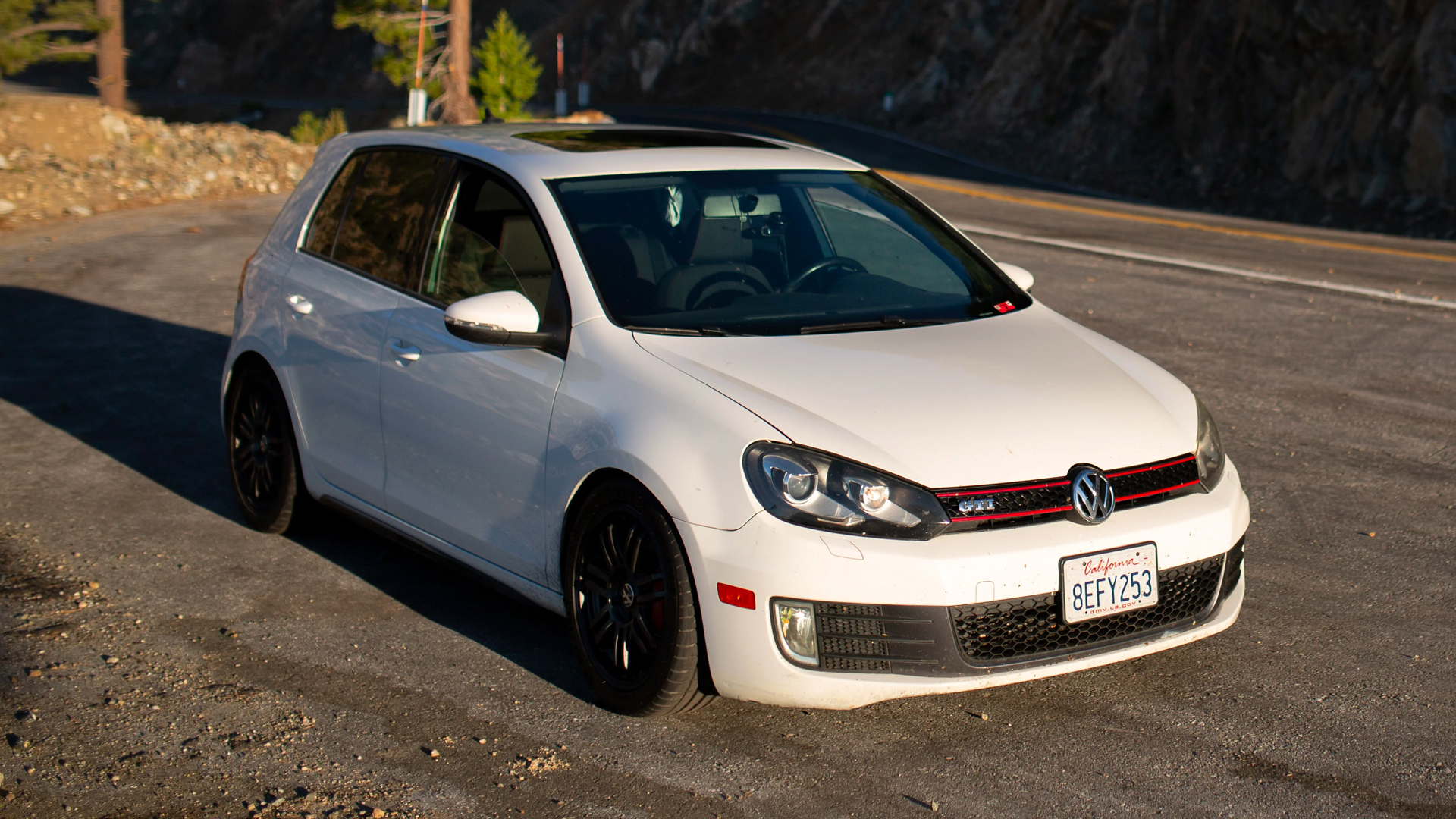

We may earn revenue from the products available on this page and participate in affiliate programs. Learn more ›
I spent a lot of time behind the wheel of my 2010 VW GTI. Ten thousand miles of motoring, a lot of it in the canyons, helped me formulate a list of mods, nay demands, I had of my plucky German hatchback. I tried my unsprung weight mods, some trick Whiteline bushings, and some Bilstein PSS coilovers, but I was still left wanting. In my search for insane barely-steering-through-this-corner turn-in and rotation, I deduced how to add camber and, crucially, track-width to my GTI, without spending a ton of money.
During research for lightweight suspension parts like aluminum knuckles and control arms, I learned that the Audi TT shares most of its suspension componentry with the Golf, with the primary differences being the uprights (things that hold the wheel bearing and strut) and lower ball joints. There is a common misconception that the TT control arms are wildly extended, and that’s how the TT has a 25mm or so of extra track width. I do not think that is the case.

In my search, I couldn’t find a definitive answer for the control arm length question. Visually, the Volkswagen Passat/CC control arms look identical to the TT stuff. The big difference that I saw was the ball joint geometry. Clearly, the TT ball joints are much different. The mounting plates for the lower control arms are much longer compared to the Passat/CC/Golf, have slots for camber adjustment instead of fixed studs, and have different shank lengths for the actual lower ball joints. The ball joints were my ticket. ECS Tuning listed them as a left and right pair, with distinctly different part numbers to the Golf parts. So yes, the TT is also on the PQ35 platform.
I researched some part numbers and put in an order for both front lower ball joints and the retaining plates that worked as studs. The classic parts wait ensued. Meanwhile, I dug my tie rod kit out of storage and budgeted for an alignment at West End in LA’s South Bay.
Once I got my stuff in the mail, I got to work. I jacked the car up, used some jack stands, broke the air gun out, and promptly unbolted the front axles and three nuts holding the old lower ball joint to the control arm. I pulled the uprights and struts towards the outside of the car and popped the axles out of their splines. In doing so, I freed up the space to unbolt the ball joints from the uprights.
The ball joint swap went off without a hitch. Well, mostly. I ended up fashioning studs and nuts for the new lower ball joint completely eschewing the retaining plate/stud setup. I used the studs from my old lower ball joints by pressing them out on my Harbor Freight press. That might seem sketchy, but to jump into the future for a second, I tracked and canyoned with this setup for a few thousand miles, so it was cool. Though getting the TT control arms may have streamlined the process greatly.
With that problem solved, I knocked out my inner and outer tie rod refresh and eyeballed the alignment for the trip. The result? This:
Hectic fitment and camber. My eyeballs told me I got -3 degrees of camber, which looks sick as heck, but was a bit more than I bargained for. Judging by the amount of extra tie rod I used, I gained about 20mm of track width. The change was nuts.
The alignment shop corroborated my eyeballs. Final alignment was at -2.9 degrees per side, give or take. The shop agreed with me that it was a bit much, but that I should trial it for a while. I definitely gave those ball joints the abuse of a lifetime, with multiple track sessions and spirited canyon runs.
I was massively impressed with the results. Sure, the tramlining was terrible, the car was a bit on the darty side, the car suddenly had torque steer, and the steering had a bit less feel. But the front end of the car beggared belief in the turns. Turn-in was immediate, and the car never failed for lateral traction in the front end.
The moment I fell out of love with the setup was when my brand new Michelin Pilot Sport 4S tires wore down more quickly than the last time. This set lasted 6,000 miles, about 3,000 miles fewer than last time. It really stung the wallet this time because I couldn’t take advantage of the Michelin Promise warranty. You gotta pay to play, I suppose.
With obvious evidence of camber wear and superheating of the inner tire shoulder, I decided to explore other methods to achieve front-end authority. The TT ball joints came off, and I started searching for sway bar combinations and camber plates.
The journey to optimize the GTI continued. The next step was camber plates.